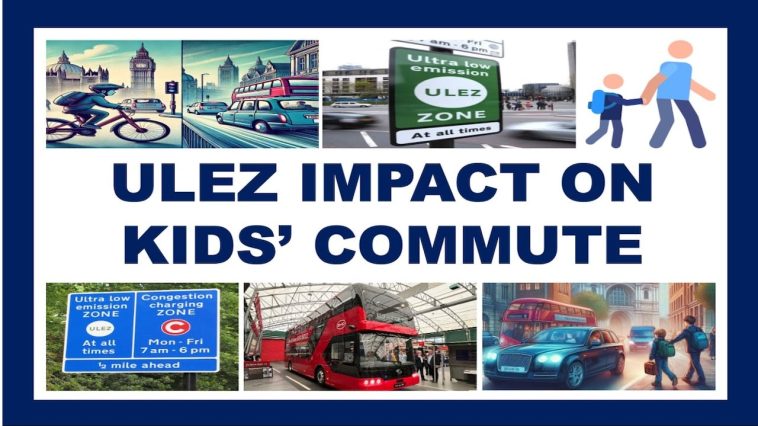Forty percent of children who travelled to school by car in central London switched to walking, cycling, or public transport after ULEZ (Ultra-Low Emission Zone) was introduced, a new study reports.
In Luton, a comparison area with no ULEZ, just 20% of children switched from commuting by car to more active modes of transport during the same period.
Car travel and air pollution
Car travel adds to
UK guidelines recommend a daily average of 60 minutes of moderate-to vigorous physically activity for children of school age and adolescents. However, only 45% of five- to sixteen-year-olds met these levels in 2021. In the UK, one in three ten- and eleven-year-olds are overweight or obese.
ULEZ reduced air pollution levels
London introduced ULEZ in April 2019 to reduce the number of cars on the road that did not meet emission standards and improve air quality. The measure reduced harmful nitrogen oxides and particulate matter in central London by 35% and 15%, respectively, within the first ten months of its introduction.
In a study released on 4th September in the International Journal of Behavioral Nutrition and Physical Activity (citation below), researchers from the University of Cambridge and Queen Mary University of London, and other institutions investigated the impact of the ULEZ on children’s school commute. This research is part of the Children’s Health in London and Luton (CHILL) study.
The Study
The researchers gathered and examined data from almost 2,000 six- to nine-year-olds attending 84 primary school in London and Luton (the control area). A total of forty-four schools were located with catchment areas either within or bordering London’ ULEZ.
These school were compared to a similar number of primary schools in Luton and Dunstable (acting as a comparison group). Including the comparison site allowed the researchers to draw stronger conclusions and provided greater confidence that the observed changes were due to the introduction of the ULEZ.
The research team collected data from June 2018 to April 2019, before ULEZ was implemented, and again from June 2019 to March 2020, a year after its implementation. The second data collection period took place before COVID-19-related school closures.
-
Central London vs. Comparison Group
Among schoolchildren in London who commuted by car before the introduction of ULEZ, 42% switched to more active modes of transport, while 5% switched in the opposite direction, from active to inactive modes.
In contrast, only 20% of children in Luton shifted from car travel to active modes, while a nearly identical proportion (21%) switched from active…

